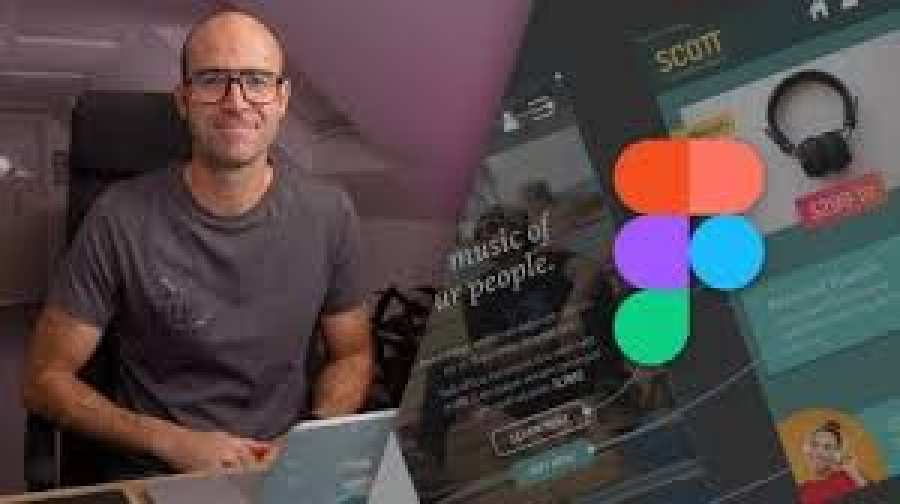10 Design Books Every Freelancer Should Read
For freelance designers, skill development doesn't stop with mastering software tools like Figma, Illustrator, or Photoshop. True growth as a creative professional comes from expanding your understanding of design thinking, client communication, creative problem-solving, and the business of freelancing.
While online courses and tutorials offer hands-on learning, books provide timeless, in-depth perspectives that can shift your mindset and elevate your design process. Whether you're just starting or already running a successful freelance business, reading the right design books can enhance your creativity, sharpen your judgment, and teach you how to operate like a true design professional.
This curated list from FreelancerBridge outlines 10 essential books that every freelance designer should read in 2025. These books cover design theory, business acumen, productivity, and creative thinking — the complete package for thriving in the freelance design world.
Long Description: 10 Must-Read Design Books for Freelancers
1. The Design of Everyday Things by Don Norman
Why Read It:
This classic book teaches the fundamentals of user-centered design. If you’re in UI/UX or product design, this book will reshape how you approach functionality, interfaces, and user interaction.
What You’ll Learn:
How design affects usability
The importance of affordances, feedback, and constraints
Why understanding human behavior improves design decisions
Freelance Application:
Designers working on apps, websites, or product interfaces will learn how to improve user experience and justify their design choices with psychological principles.
2. Thinking with Type by Ellen Lupton
Why Read It:
Typography is more than selecting a font. It’s about hierarchy, rhythm, and clarity. This book breaks down complex typography concepts with practical examples.
What You’ll Learn:
Type anatomy and classifications
How to combine fonts effectively
Best practices for layout and readability
Freelance Application:
Every designer needs strong typography skills, whether for branding, web, print, or product design. This book is a foundational resource.
3. Show Your Work by Austin Kleon
Why Read It:
Freelancers often struggle with self-promotion. This book is a guide to marketing your creative process without feeling like you're "selling."
What You’ll Learn:
How to build an audience through transparency
The power of sharing in-progress work
Creating value before asking for attention
Freelance Application:
Especially helpful for building a personal brand through social media or content marketing.
4. Steal Like an Artist by Austin Kleon
Why Read It:
This book encourages designers to draw inspiration from the world while still creating original work. It debunks the myth of pure originality.
What You’ll Learn:
How to remix ideas ethically
Where to find inspiration
How to get started when you feel creatively blocked
Freelance Application:
Useful for reigniting creativity during client dry spells or idea fatigue.
5. Don't Make Me Think by Steve Krug
Why Read It:
A practical guide to web usability. This book simplifies UI/UX principles for real-world applications, perfect for freelancers working on digital platforms.
What You’ll Learn:
How to design intuitive navigation
The importance of clarity and consistency
How to test usability with real users
Freelance Application:
Ideal for web designers, app designers, or anyone presenting wireframes and prototypes to clients.
6. Creative Strategy and the Business of Design by Douglas Davis
Why Read It:
Freelancers must combine creativity with strategic business thinking. This book bridges the gap between creative work and business value.
What You’ll Learn:
How to align design with business goals
Writing strategic briefs
Presenting design solutions to decision-makers
Freelance Application:
Essential reading for freelancers working with corporate or B2B clients.
7. Grid Systems in Graphic Design by Josef Müller-Brockmann
Why Read It:
Grids form the backbone of any good layout. This book is a deep dive into grid theory from one of the pioneers of Swiss graphic design.
What You’ll Learn:
The mathematics behind visual structure
How to apply grid systems in various design projects
Designing layouts for balance and clarity
Freelance Application:
Improves consistency in branding, editorial, and web design projects.
8. Freelance and Business and Stuff by Amy & Jen Hood
Why Read It:
Written specifically for creatives, this book offers guidance on the business side of freelancing: contracts, pricing, pitching, and getting paid.
What You’ll Learn:
How to set your freelance rates
Writing better proposals
Protecting yourself with client contracts
Freelance Application:
If you’re struggling with pricing or client management, this book is a practical guide for navigating the freelance industry.
9. The Win Without Pitching Manifesto by Blair Enns
Why Read It:
Learn how to sell your expertise and value rather than simply responding to client RFPs or price wars.
What You’ll Learn:
Why you should stop offering free work
How to lead sales conversations with confidence
Establishing positioning to attract better clients
Freelance Application:
Great for designers who want to shift from service provider to strategic consultant.
10. Logo Design Love by David Airey
Why Read It:
If branding or identity design is part of your freelance work, this book shows you how to create memorable, strategic logos.
What You’ll Learn:
Logo creation process from sketch to presentation
Client communication and branding briefs
Real-world case studies
Freelance Application:
Gives you a professional workflow for offering logo and branding packages.
How to Use These Books to Advance Your Freelance Career
Create a Reading Routine
Set aside 30 minutes daily or block time on weekends for deep reading. If you prefer audio, many of these books are available on platforms like Audible.
Apply What You Read
Don’t just read—implement. After each chapter or book, challenge yourself to:
Create a new design based on the concept
Add a process breakdown to your portfolio
Adjust your workflow or client communication strategy
Take Notes and Build a Swipe File
Keep a digital or physical notebook where you record:
Key insights
Frameworks or strategies
Quotes that resonate
These can serve as future references for your blog, client proposals, or social media content.
Conclusion
The freelance design world demands more than just technical proficiency—it requires clear communication, strategic thinking, and a commitment to growth. These ten books provide a foundation for creative and business success in 2025 and beyond.
By making continuous learning a part of your freelance routine, you don’t just improve your skills—you elevate your value, authority, and income potential. At FreelancerBridge, our mission is to provide every creative professional with resources that lead to long-term freelance success.
Start with any one of these titles, and you'll already be ahead of the curve.


 by Emily
by Emily




